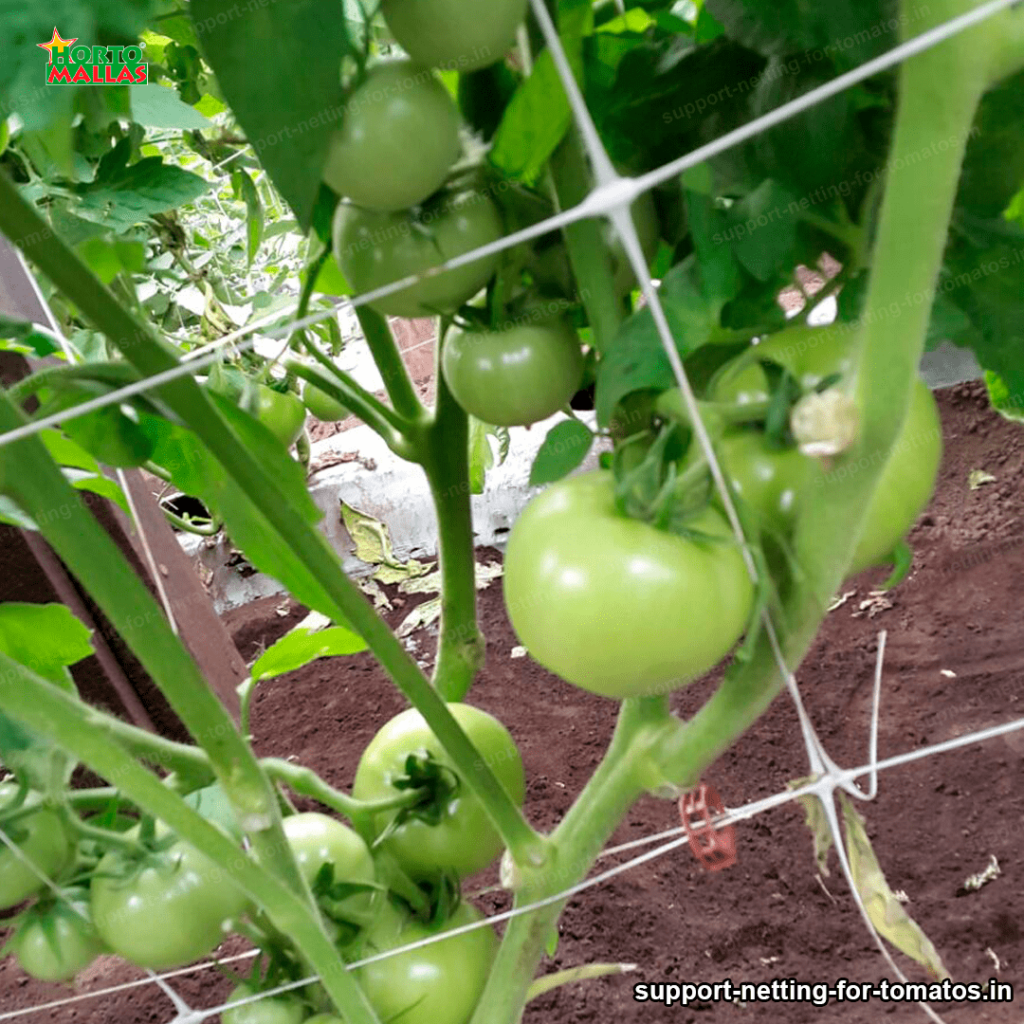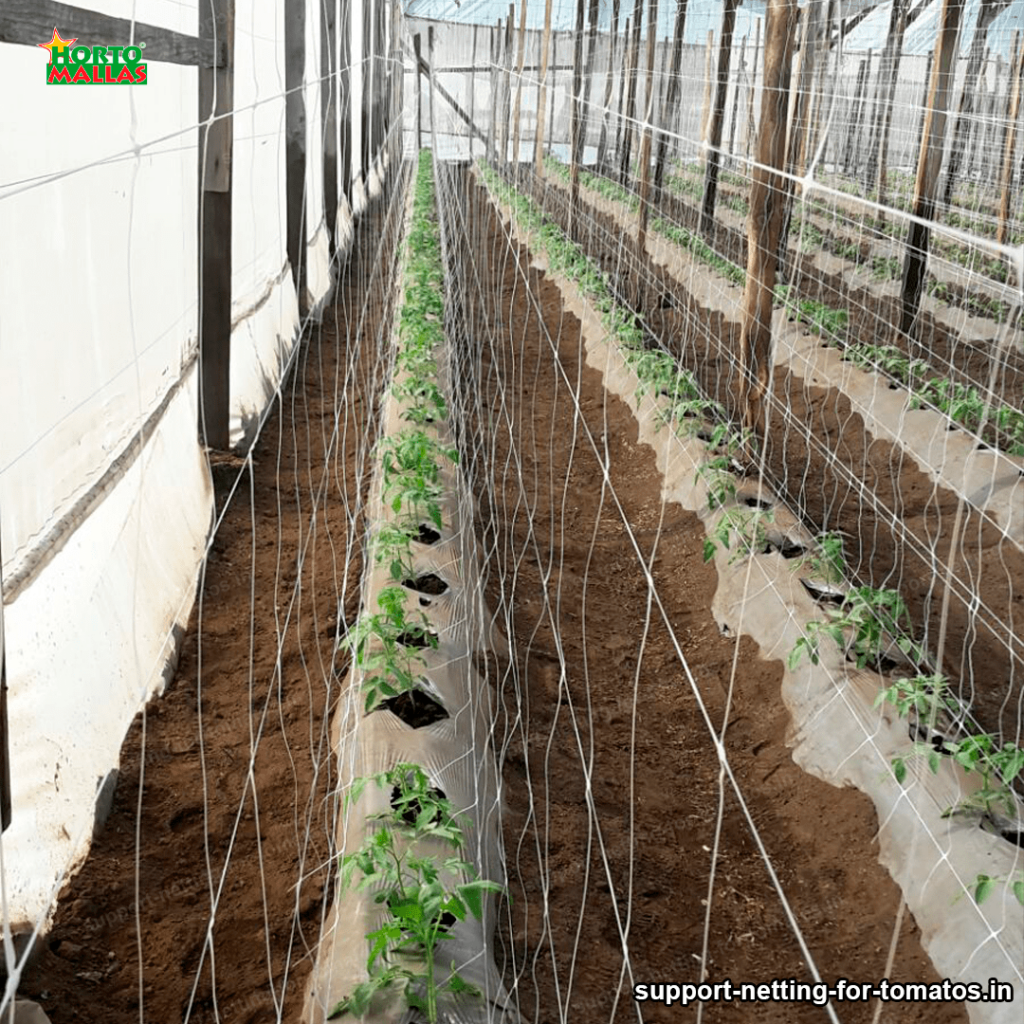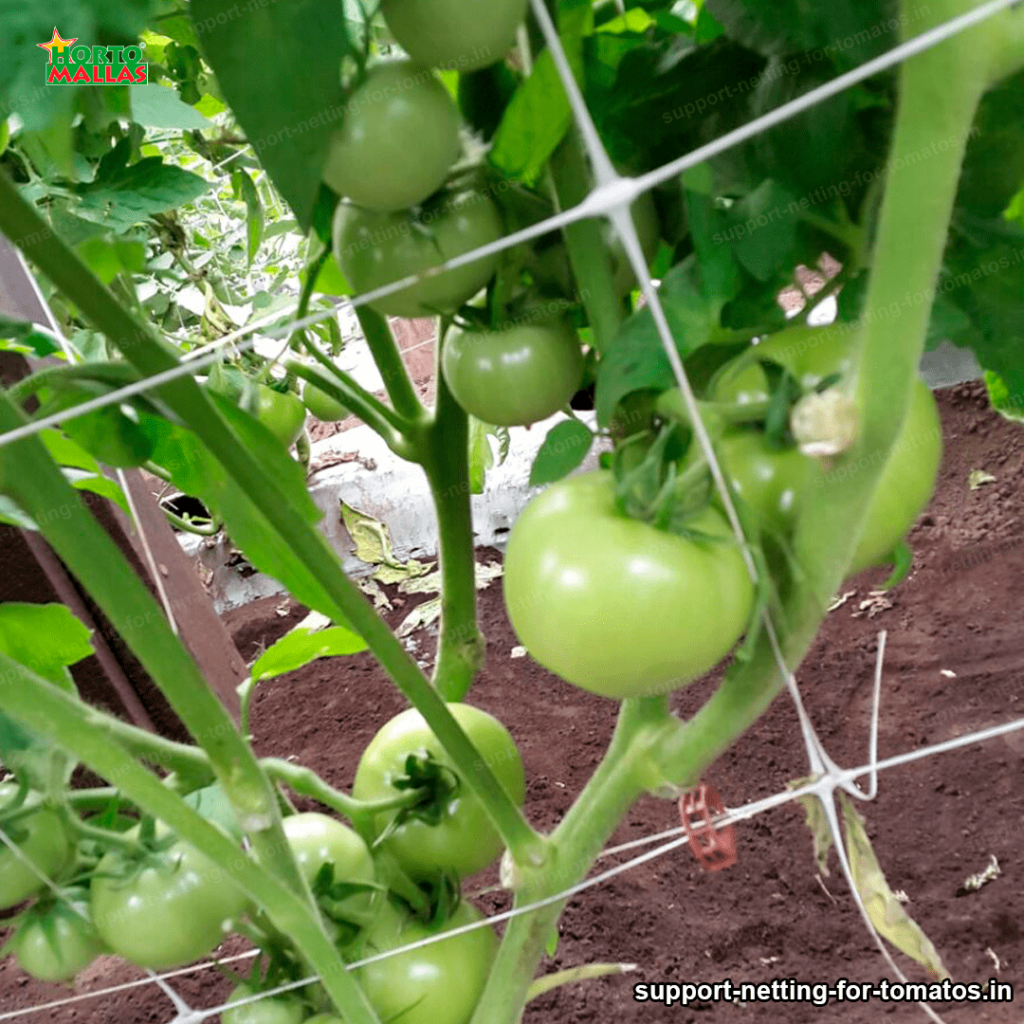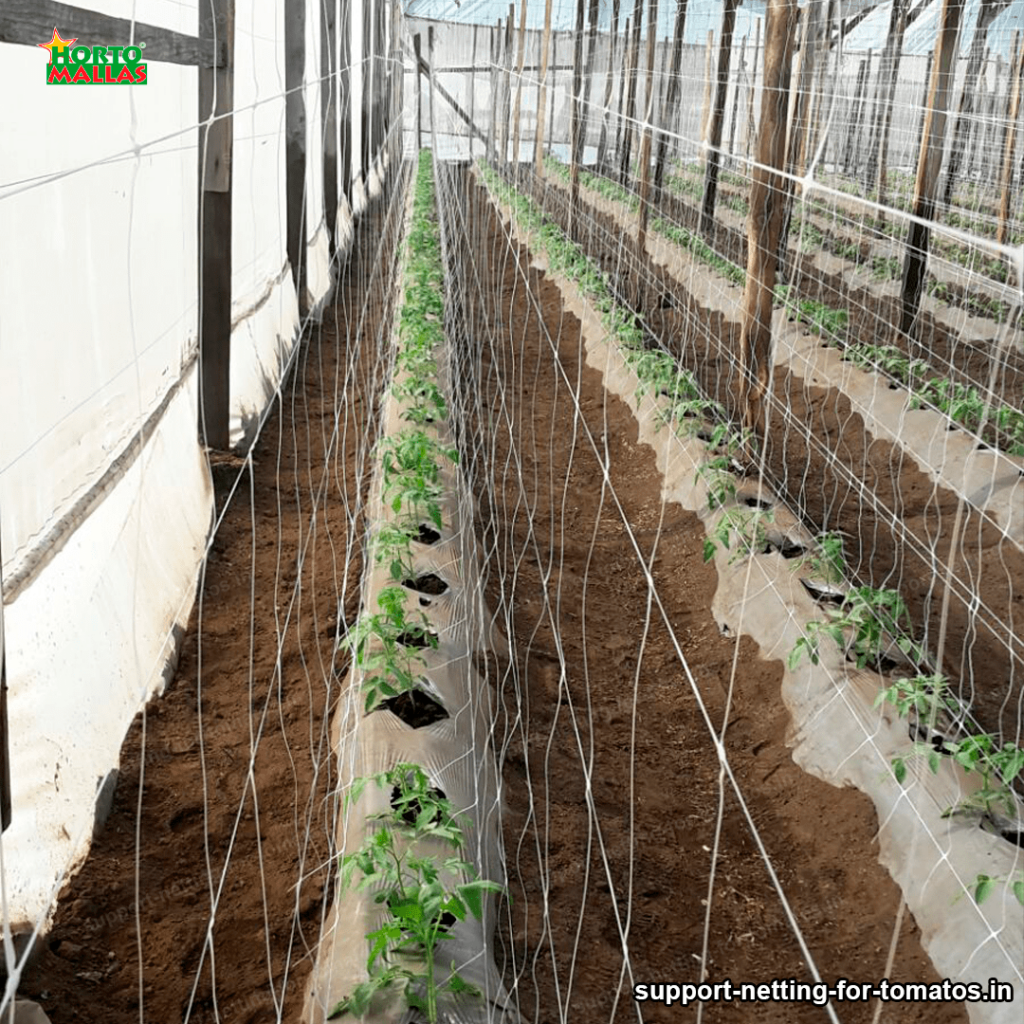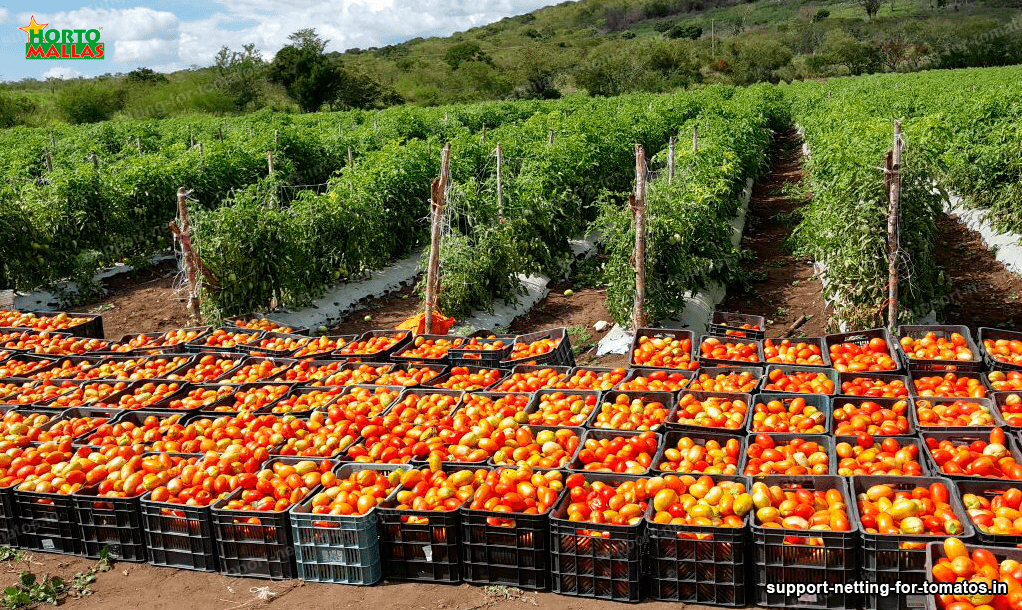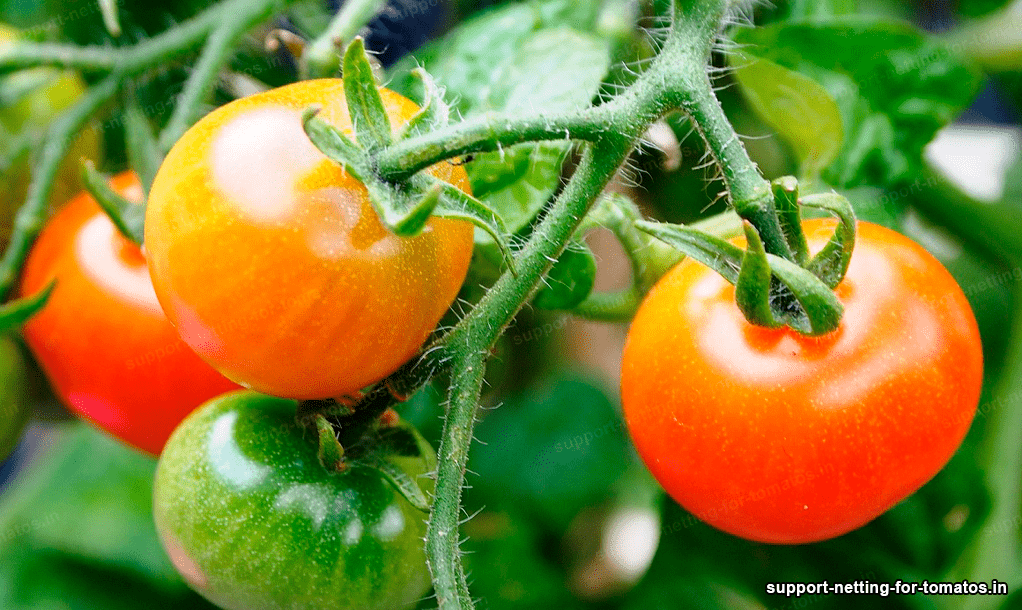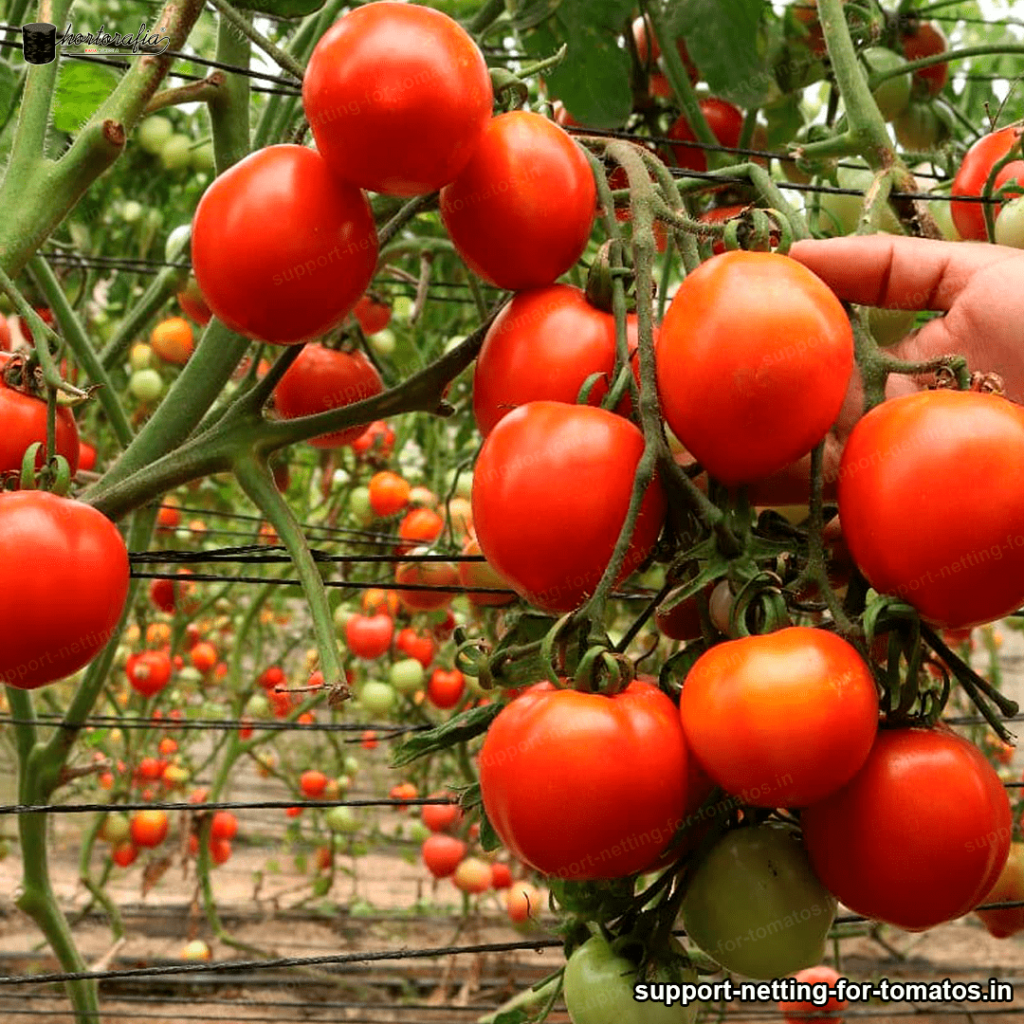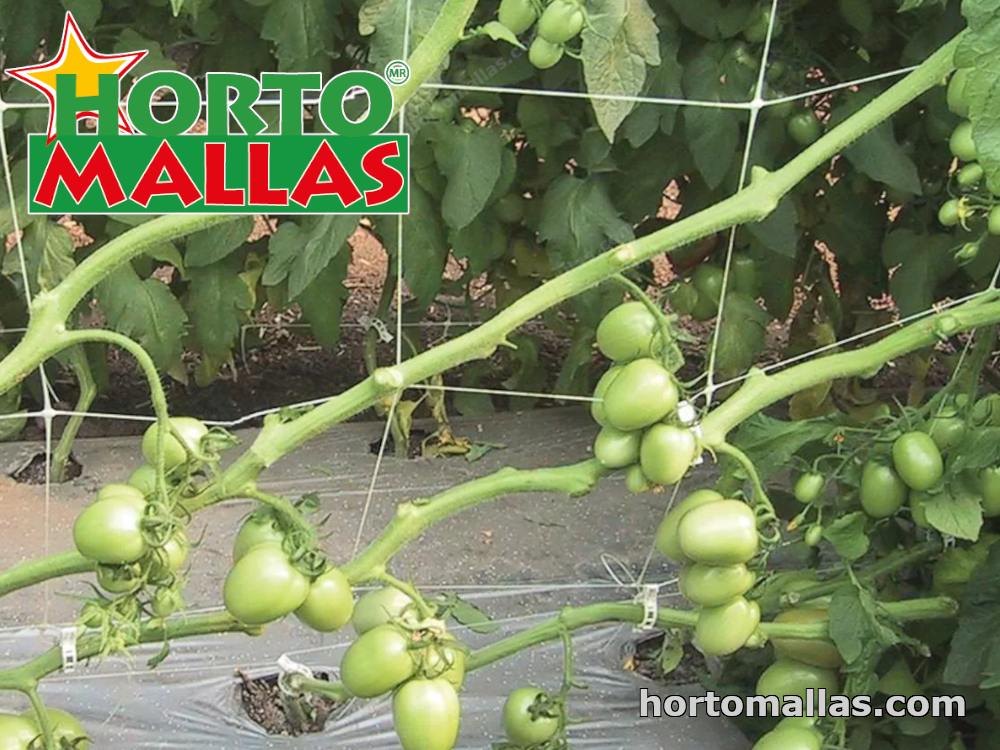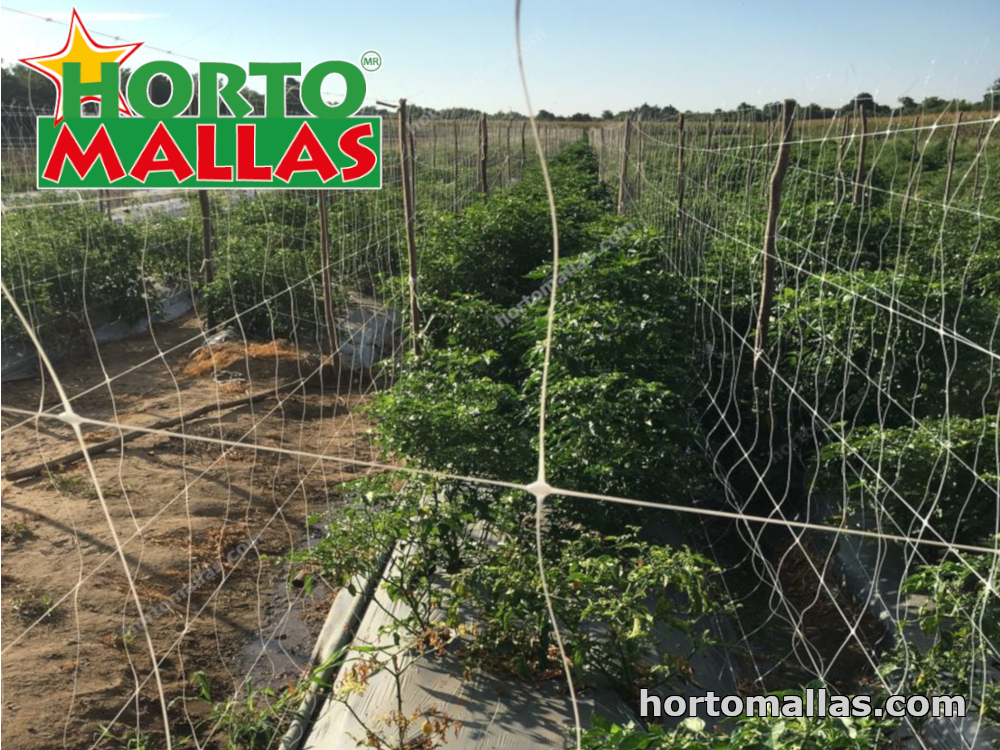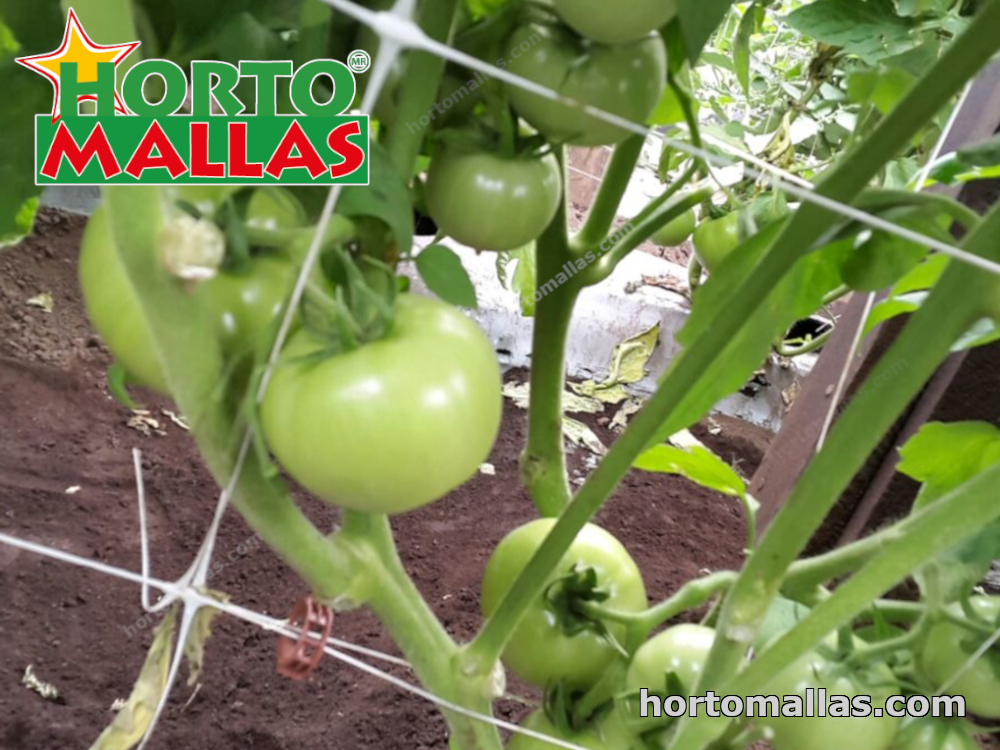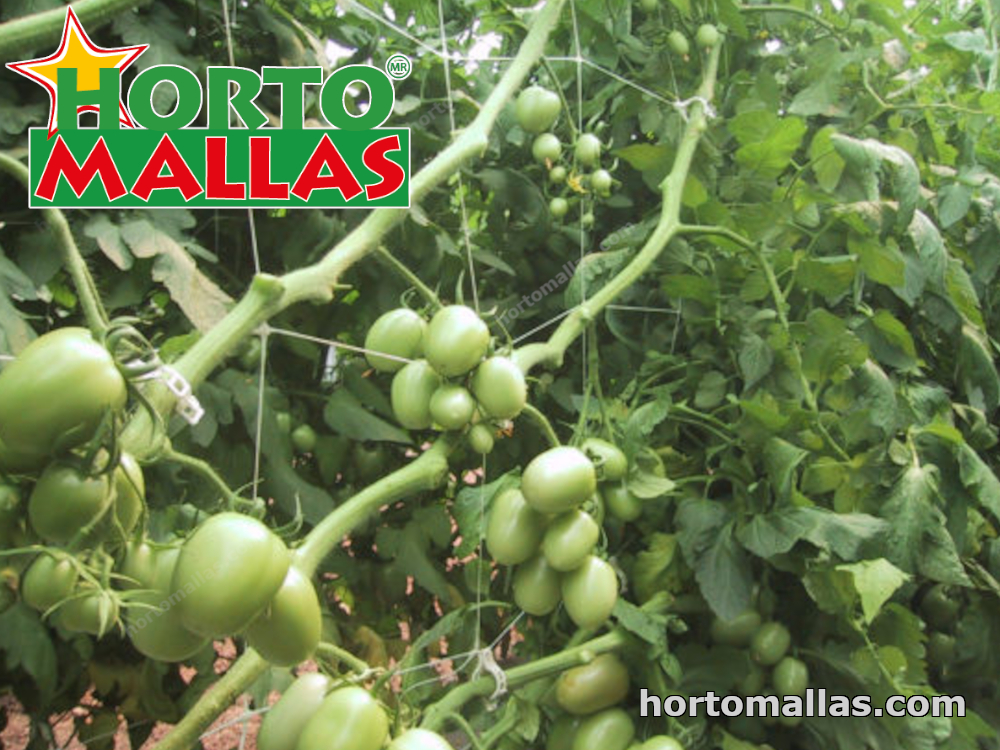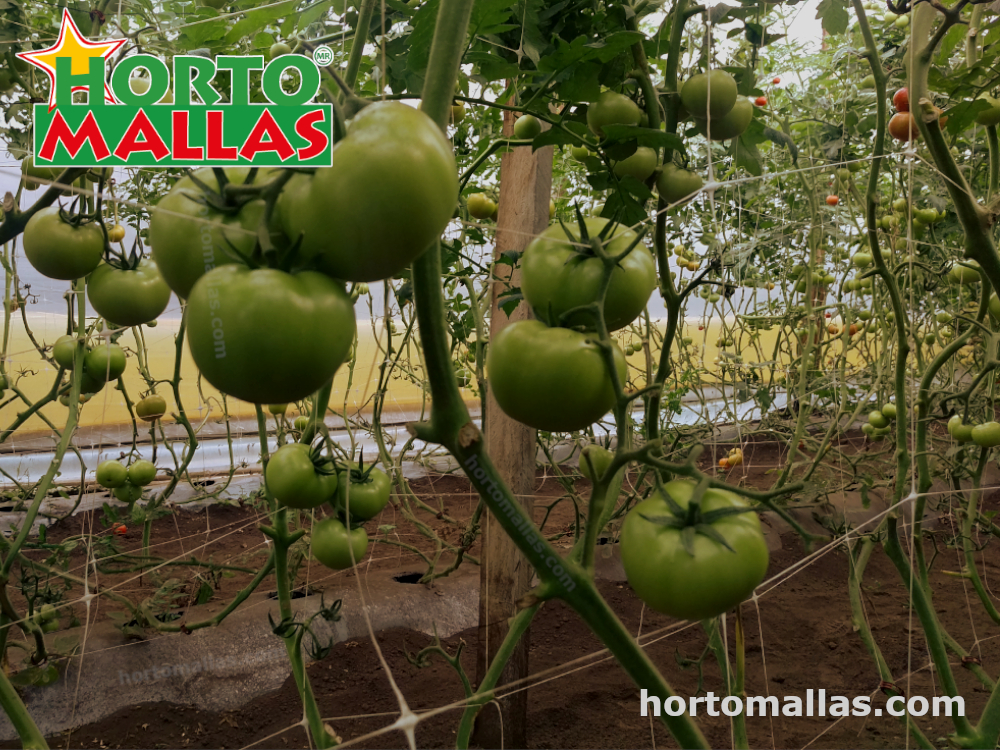Tomato plants are one of the most popular and easiest vegetables to grow, and their success depends largely on good nutrition and structure
To achieve this, it is important to ensure that the plants have adequate support to prevent them from falling, splitting and damage. For this, the Hortomallas support net is the best option. trellising This netting is a plastic tape that conforms to the shape of the plant to provide stable support. Hortomallas support netting has numerous advantages for tomato growers:
- greater strength: Due to its strong synthetic weave, the Hortomallas support netting provides much stronger support than other supports. This means plants will be more secure and less prone to damage.
- Better nutrition: Hortomallas support netting provides adequate support for the tomato plant, which helps ensure that proper nutrition is obtained. This ensures that the plant receives the nutrients it needs to grow and produce fruit.
Increased production: Because the Hortomallas support netting is stronger and allows the plant to get adequate nutrition, tomato plants are able to produce a greater amount of fruit. This means that growers can obtain a greater amount of tomatoes per plant, thus increasing their production.
- Increased durability: The Hortomallas support netting is very durable, which means that you won’t have to be changing supports as often. This means that growers will not have to invest as much time and money to maintain their crops.
- Less maintenance: The Hortomallas support netting does not require a lot of maintenance. This means that growers will not have to spend time and money to maintain their crops.
In conclusion, Hortomallas support netting is an excellent choice for tomato growers. This netting offers a strong and durable support, which allows for higher production and less maintenance. In addition, Hortomallas support netting ensures that tomato plants receive adequate nutrition, which helps ensure that the best possible results are obtained. For all these reasons.
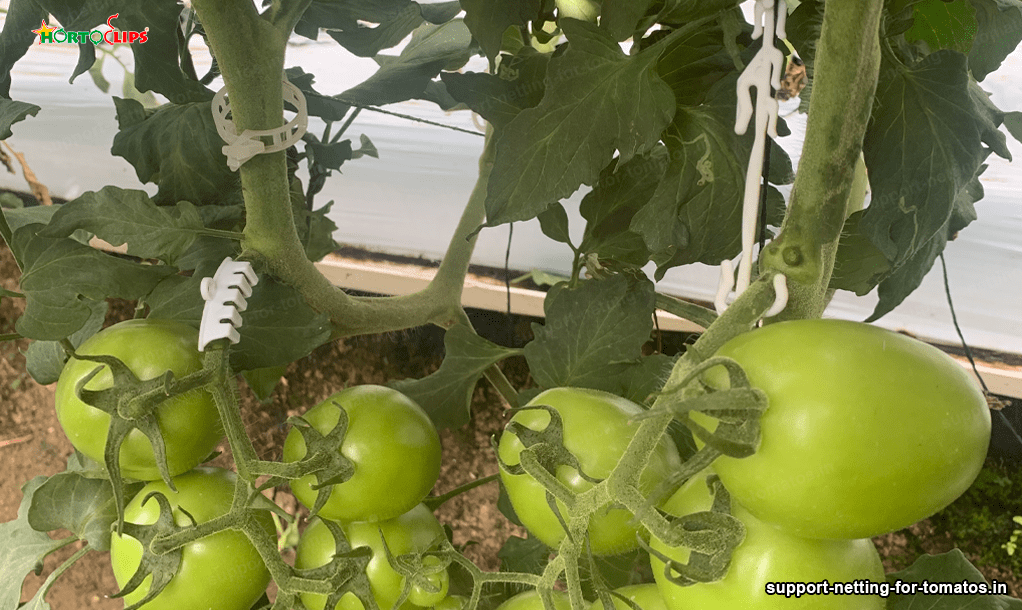
Disadvantages of not staking tomato plants with HORTOMALLAS® support netting
Tomato plants are one of the most popular vegetables in the world. They are easy to grow, resistant to most weather conditions and a high yield can be harvested. However, there are some disadvantages of not staking tomato plants with HORTOMALLAS support netting.
The first disadvantage of not trellising tomato plants with HORTOMALLAS support netting is that they cannot benefit from the improved structural strength of the plant. This is because the support netting helps to maintain the shape and direction of the plant. This is especially important when dealing with tomato plants that can grow very tall. If the support netting is not used, the plant may blow in the wind or bow under the weight of the ripe tomatoes. This can affect the yield and quality of the tomatoes. In addition, it can also affect the shape of the plant, which can make it difficult to maintain.
Another disadvantage of not staking tomato plants with HORTOMALLAS support netting is that the chances of a good crop are reduced. The support netting helps keep tomatoes safe and protected, especially from insects and diseases. This prevents tomatoes from damage before they ripen and can help increase crop yields. If support netting is not used, tomatoes may be more susceptible to damage and yields may be lower.
In addition, tomato plants may also be more susceptible to insect attack if not trained with HORTOMALLAS support netting. This is because insects tend to attack plants with a weaker structure. The support netting helps to keep the plant stronger and protect it from insects. This can help prevent insects from damaging the plant and increase the chances of a good crop.
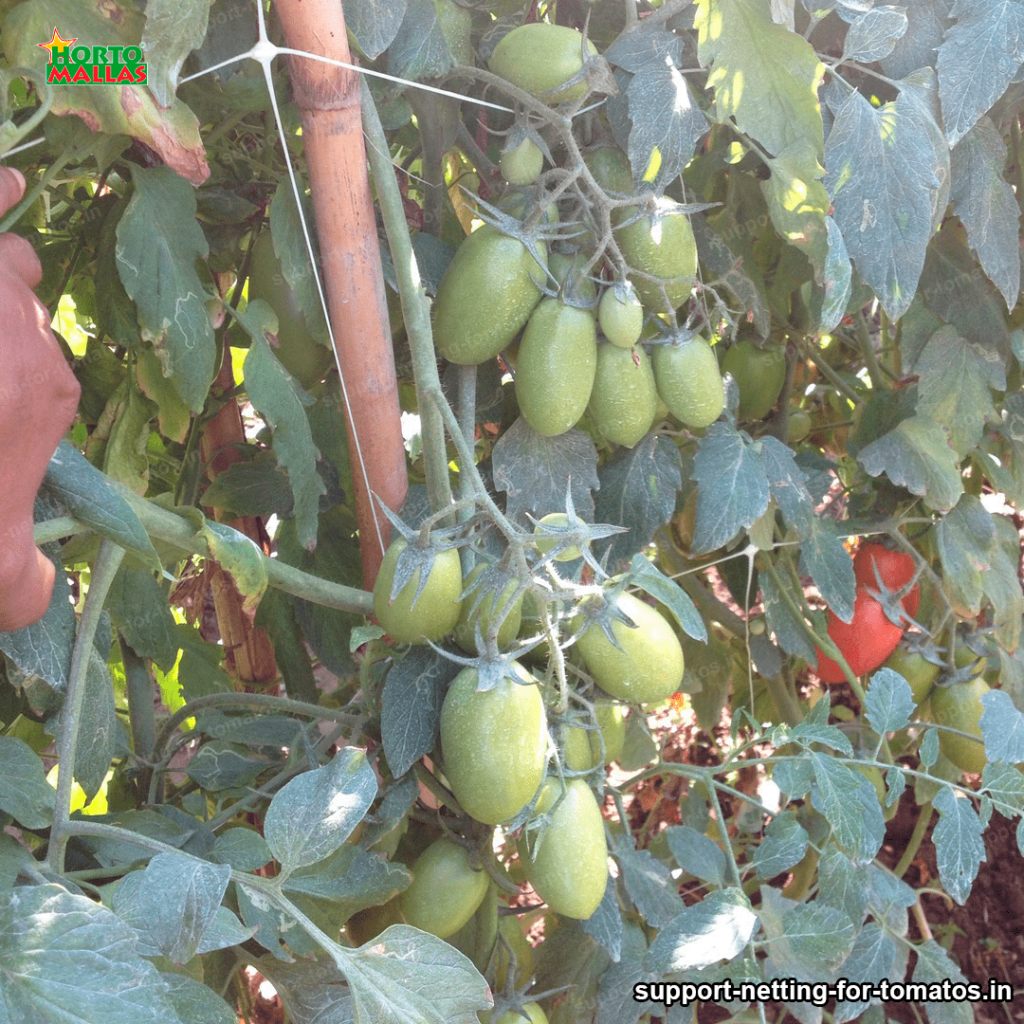
There are also some economic disadvantages to not staking tomato plants with HORTOMALLAS support netting.
Support netting is an initial investment, but it can also help save money in the long run. That’s because support netting can help increase crop yield, which means you get more for the same amount of money. In addition, it can also help reduce the cost of pesticide treatments, as it can reduce the amount of insects attacking the plant.
In summary, there are some disadvantages of not staking tomato plants with HORTOMALLAS support netting. These disadvantages include reduced structural strength of the plant, reduced likelihood of a good crop, and increased susceptibility of the plant to insects. In addition, there are some economic disadvantages, such as the initial cost of the support netting and reduced pesticide treatment costs. Overall, support netting is a good investment for growers who want to get the best possible results from their tomato plants.
Importance of the use of support netting for tomato trellising
The importance of using support nets for tomato trellising is undeniable. These nets are an indispensable tool for growers, as they allow them to provide adequate support to tomatoes for their proper growth and development. The use of these support nets for tomato staking contributes to improve the quality of the products, as well as facilitating harvesting, handling and storage.
One of the main benefits of using tomato support netting for trellising is that it prevents tomatoes from falling to the ground. This helps to significantly reduce insect and fungal damage, as well as spoilage and loss of product quality. In addition, tomatoes that are supported with netting do not suffer physical damage, such as damage caused by wind or frost.
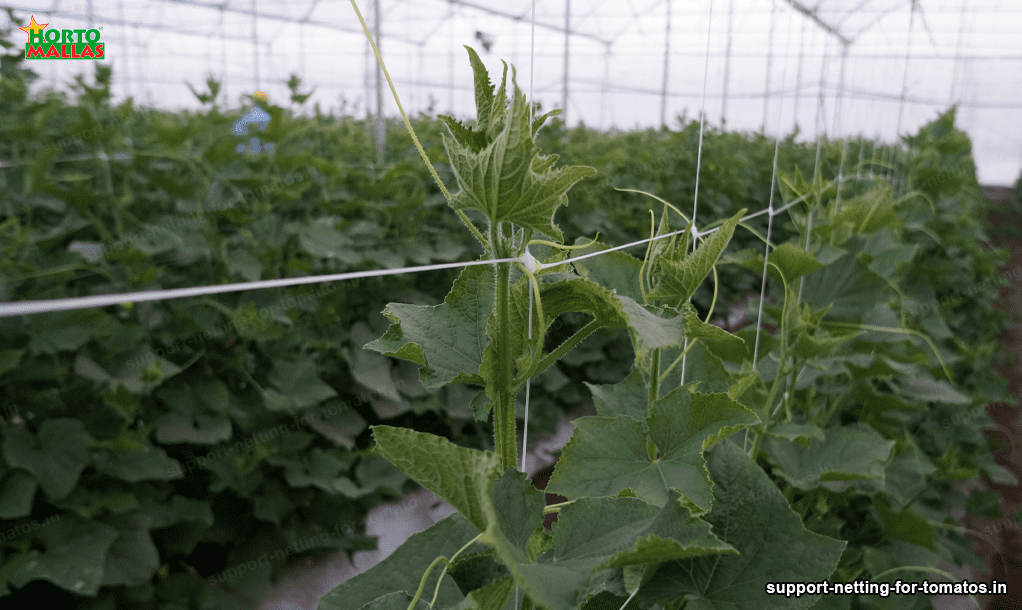
Another advantage of using tomato support netting for staking tomatoes is that it helps to maintain crop hygiene.
These nets prevent insects, fungi and other pests from getting close to the tomatoes, which drastically reduces the risk of contamination. This, in turn, contributes to improving the quality of the final product.
In addition, the use of support netting for trellising tomatoes helps to improve air circulation in the crop. This reduces the risk of diseases such as tomato rot. It also allows tomatoes to receive the necessary amount of sunlight, which contributes to their proper development.
Finally, the use of tomato support nets for staking tomatoes helps facilitate harvesting, handling and storage. These nets allow tomatoes to be picked easily, which reduces the time spent on harvesting. It also facilitates the transport of tomatoes from the crop to the destination.
In conclusion, the use of support nets for tomato trellising is of utmost importance to growers. These nets provide adequate support for tomatoes, prevent them from falling to the ground, improve crop hygiene, improve air circulation and facilitate harvesting, handling and storage. These benefits contribute to improving the quality of the final product. Therefore, the use of tomato support netting for trellising is an indispensable tool for growers.
